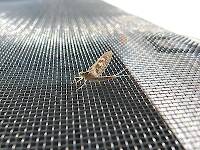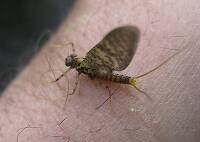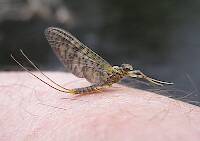
Salmonflies
Pteronarcys californica
The giant Salmonflies of the Western mountains are legendary for their proclivity to elicit consistent dry-fly action and ferocious strikes.
Featured on the forum

Nymphs of this species were fairly common in late-winter kick net samples from the upper Yakima River. Although I could not find a key to species of Zapada nymphs, a revision of the Nemouridae family by Baumann (1975) includes the following helpful sentence: "2 cervical gills on each side of midline, 1 arising inside and 1 outside of lateral cervical sclerites, usually single and elongate, sometimes constricted but with 3 or 4 branches arising beyond gill base in Zapada cinctipes." This specimen clearly has the branches and is within the range of that species.

Troutnut is a project started in 2003 by salmonid ecologist Jason "Troutnut" Neuswanger to help anglers and
fly tyers unabashedly embrace the entomological side of the sport. Learn more about Troutnut or
support the project for an enhanced experience here.
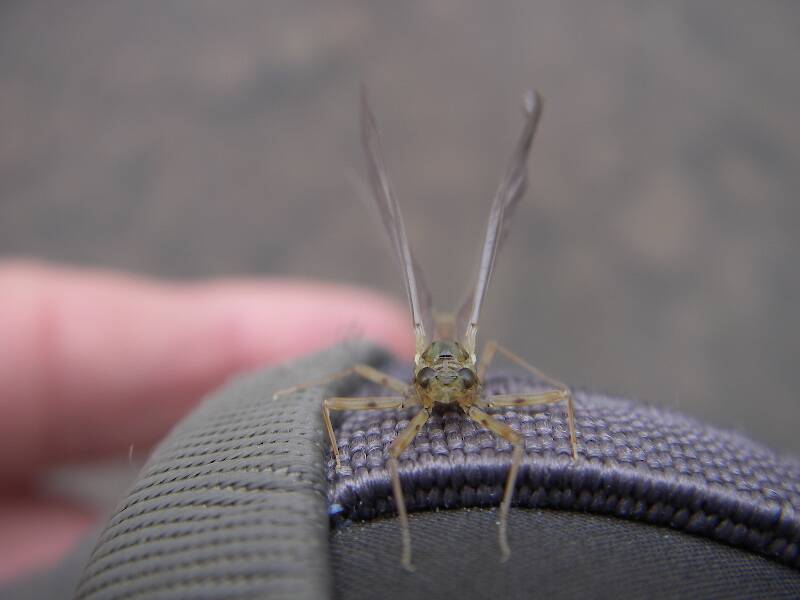
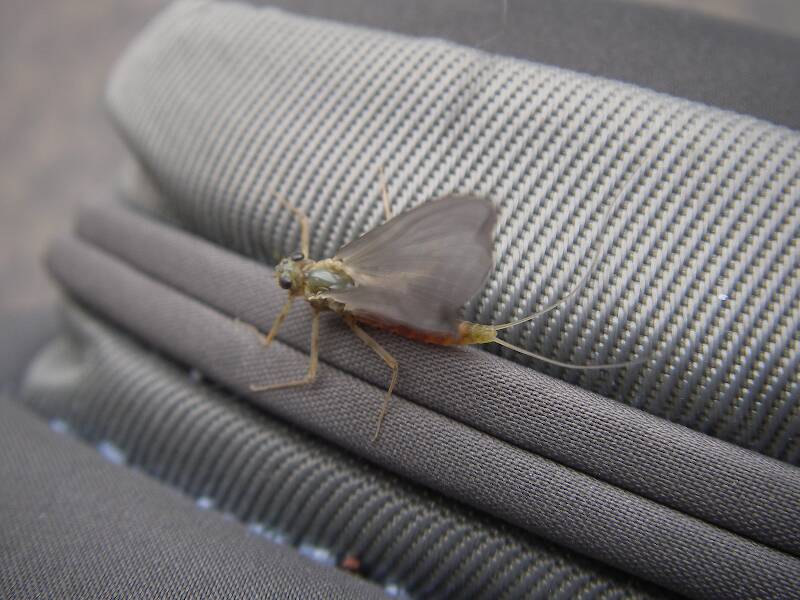
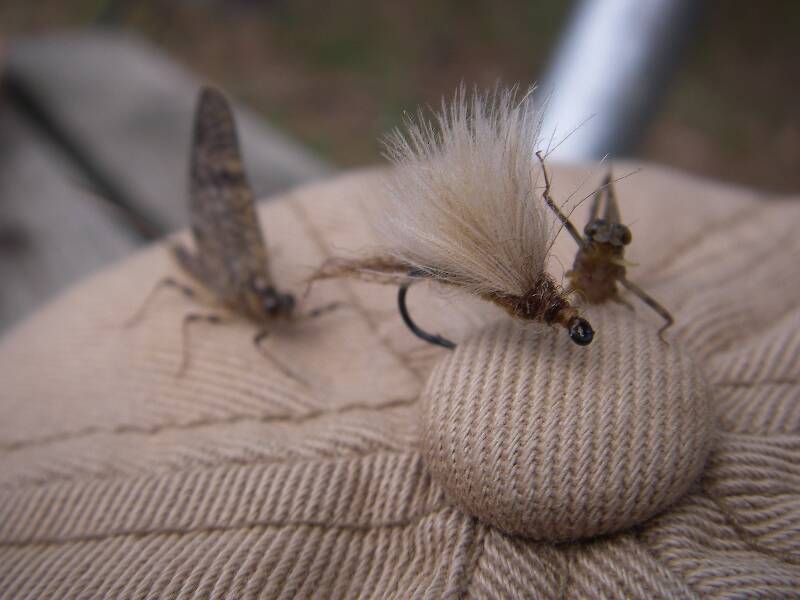
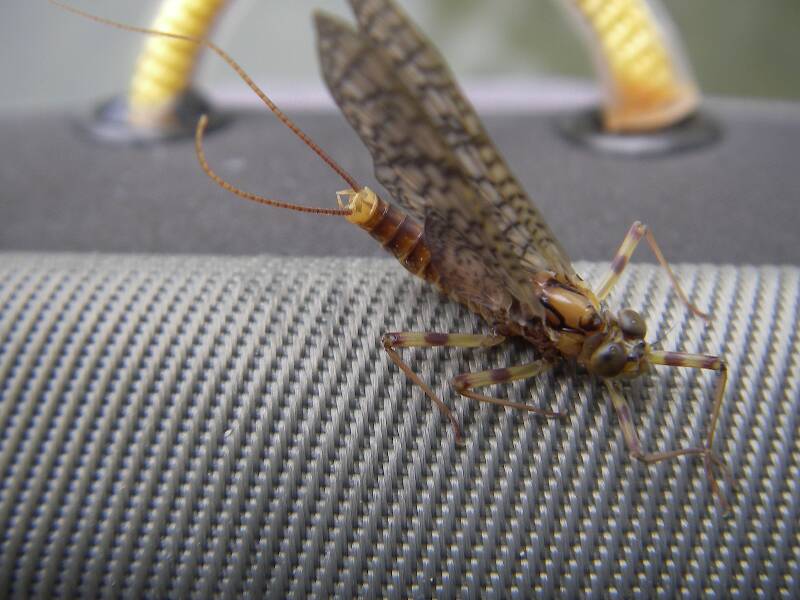
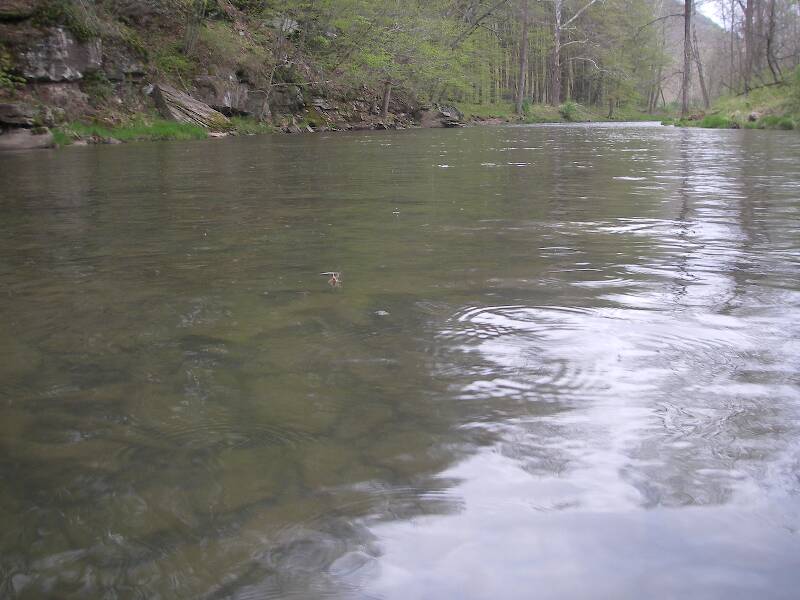
PaulRoberts on May 7, 2012May 7th, 2012, 7:04 am EDT
I've known pleuralis to be olive and vitreus to be yellower with an orange (sometimes quite bright) abdomen. I assume this is in females only but I don't remember.
As far as being certain, I guess they'd have to be keyed out.
As far as being certain, I guess they'd have to be keyed out.
Entoman on May 7, 2012May 7th, 2012, 9:11 am EDT
They are 9.5 mm. I pickled them and when I get some time, which will not be today I'll try and run them through the keys..
As far as being certain, I guess they'd have to be keyed out.
I'm not aware of any reliable keys for determining between the two species without male imagos. If you had them, size wouldn't help but vitreus has more prominent penes easily distinguishable from pleuralis and usually dark medial marks on the terga lacking on pleuralis. I'm pretty sure male duns aren't developed enough to show either trait with any clarity unless it's a really good closeup photo.
All we really have are the old angler's guidelines regarding duns:
1. Earlier, darker, tan & gray tinted - pleuralis
2. Later, lighter, yellow & orange tinted - vitreus
Frankly, I didn't notice the amberish hues on Tony's specimen and based my initial opinion on timing. The lighting is such in his photos that it looked dark enough to not raise an alarm about its shade either. I wasn't sure about Eric's which is why I left my comments about his photos at the genus level. After comparing the two more closely and taking into account the different lighting, its pretty obvious that Tony's and Eric's are the same species.
Good job, Paul. I have to agree with you that they are probably vitreus. So much for counting on timing this year, huh? :)
"It's not that I find fishing so important, it's just that I find all other endeavors of Man equally unimportant... And not nearly as much fun!" Robert Traver, Anatomy of a Fisherman
Entoman on May 9, 2012May 9th, 2012, 12:18 pm EDT
Guys -
I'm embarrassed to admit another character completely overlooked - the pale tails! E. pleuralis has pretty dark ones. OOPs...
I'm embarrassed to admit another character completely overlooked - the pale tails! E. pleuralis has pretty dark ones. OOPs...
"It's not that I find fishing so important, it's just that I find all other endeavors of Man equally unimportant... And not nearly as much fun!" Robert Traver, Anatomy of a Fisherman
Quick Reply
Related Discussions
Topic
Replies
Last Reply
6
Jun 10, 2009
by Martinlf
by Martinlf
1
Oct 28, 2008
by GONZO
by GONZO
5
May 20, 2009
by GONZO
by GONZO




